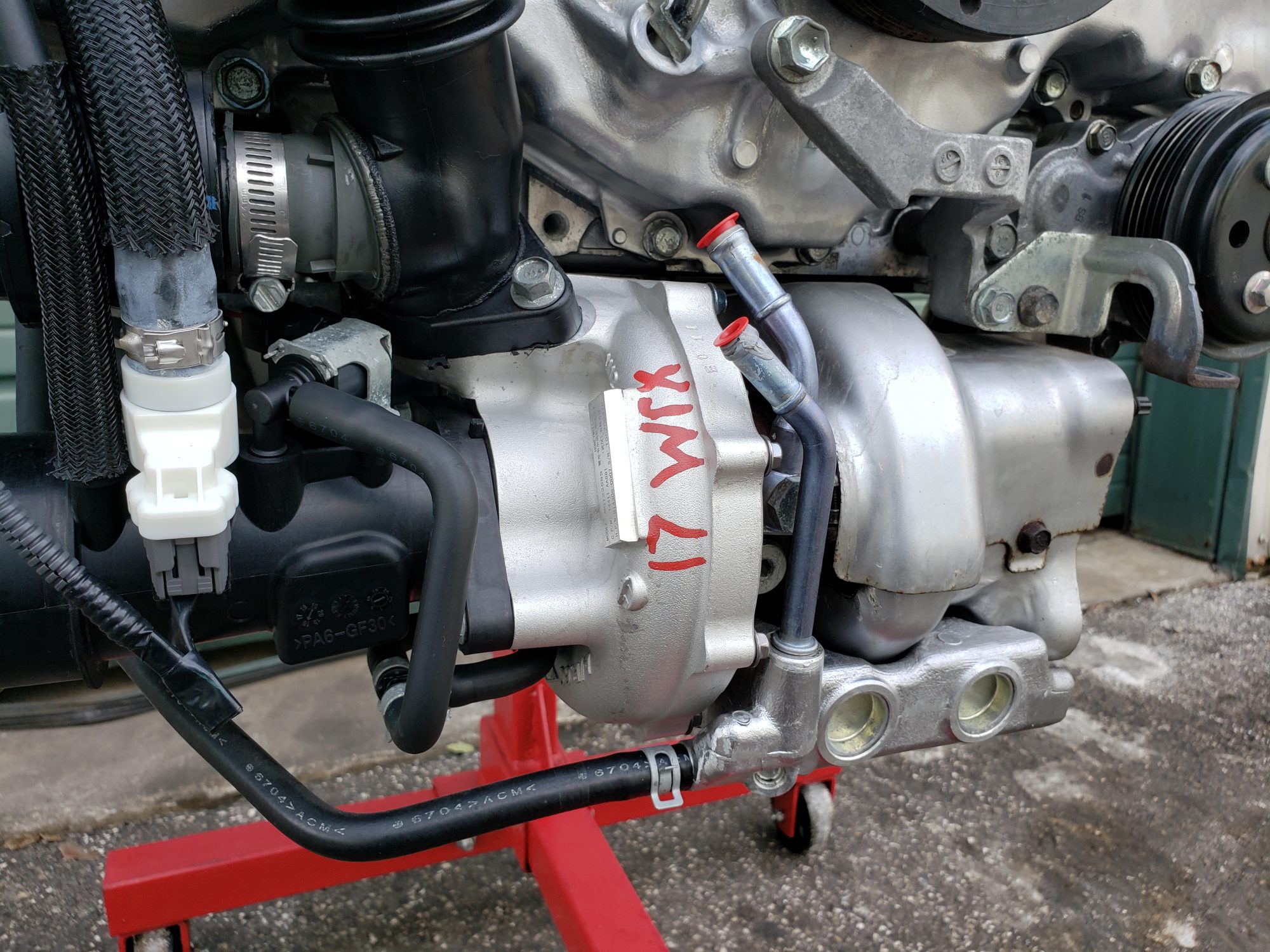Quote:
Originally Posted by Myrunr2010

Iíd love to see some data on how much efficiency/energy is gained from that. In principle that makes sense though.
Curious how the temperature on the compressor side is disconnected from the turbine side? Just because the connection between the two sides isnít that bulky and heat soak isnít that bad?
How does Subaru handle oil return on the low-mounts?
|
The calculation is non-trivial for the energy available lost/gained since the exhaust isn't a closed system... But we can get an idea:
Hold pressure, n (mass), R (constant) all the same. Drop the temp by 100*C (180*F) from 1520F/825C/1100K to 1340F/725C/1000K. For PV=nRT, that means the volume of the air drops by 1000/1100 to 91% of the previous volume.
Hold volume constant, same calculation - absolute pressure drops to 91% of what it used to be. If you are working in pressure ratio with say 14.7psi into the turbine and atmospheric out (pressure ratio of 2), then you'll drop to 13.4psi in to a pressure ratio of 1.91 - you just lost ~5% of your available energy to extract from the exhaust... So, not huge - but it is FREE energy you are wasting. Then you just have to compare that to the packaging and other hassles and make your decision.
For heat across the turbo - There's multiple reasons. Yes, there is the physical disconnection. If the center section got as hot as the exhaust, the shaft bearings would just coke up and stop the turbo - so you *know* that it isn't as hot as the exhaust... So, already you aren't at 1400*F - you are more like 200-300*F (also below coolant boiling, if water cooled) then, the air flowing through the compressor doesn't actually have time to absorb heat from the compressor. It is there for a tiny fraction of a second. All the heat put into the air through the compressor comes from the ideal gas law + the compressor efficiency (or, inefficiency).
Turbocharger Compressor Calculations
Subaru puts a little sump below the turbo to catch the extra oil after shutdown:

Also note the vent line that runs to the PCV system to keep the turbo sump from pressurizing while running.
Hope that helps.
-Charlie
__________________
'99 4Runner SR5 Auto -
4WD swapped
'89 Camry Alltrac LE 3S-GTE 5spd
'17 Chevy Volt Premier
'16 Honda Odyssey Elite
Previous: '88 Camry Alltrac LE 3S-GE BEAMS, 90 Camry 3S-GTE, 90 Camry DX, '03 WRX wagon, '08 Outback XT